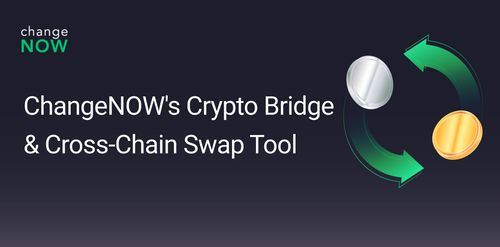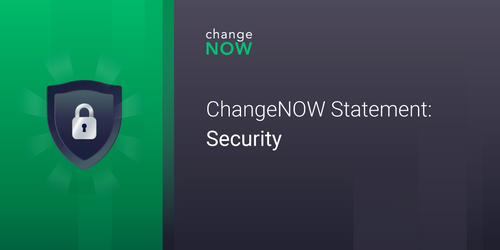How to create a cryptocurrency?
Cryptocurrencies have been growing in popularity and seem to have gone past the early adoption phase that new technologies experience. The world is moving towards a decentralized economy with over 1600 cryptocurrencies in the market. It is now a billion-dollar market and is volatile, which can be corroborated by its 30-day gains and losses exceeding 100% on multiple occasions. [caption id="attachment_5141" align="alignnone" width="471"] Source: https://www.buybitcoinworldwide.com/volatility-index/ Analysts have predicted that cryptocurrencies could replace fiat in the coming decade. Now, you might be thinking that it’s a radical idea to create your own money in the form of cryptocurrency. Yes, you are right! This is a radical idea, but there are certain key considerations that one should keep in mind before making a cryptocurrency. In this article, we will learn how to make a cryptocurrency. But first, let’s understand some key terminologies.
Source: https://www.buybitcoinworldwide.com/volatility-index/ Analysts have predicted that cryptocurrencies could replace fiat in the coming decade. Now, you might be thinking that it’s a radical idea to create your own money in the form of cryptocurrency. Yes, you are right! This is a radical idea, but there are certain key considerations that one should keep in mind before making a cryptocurrency. In this article, we will learn how to make a cryptocurrency. But first, let’s understand some key terminologies.
Coin vs. Token
Though terms like “coin” and “token” might often be used interchangeably, there are some important differences between the two. While a coin refers to a crypto asset running on its blockchain, a token runs on the blockchain of another crypto. Thus, a coin can also be referred to as a native token. Bitcoin, Ethereum, Litecoin, and Monero are some well-known examples of coins. ERC20 and BEP2 standards operating on Ethereum and Binance blockchain, respectively, are good examples of tokens. Generally, coins are generated by a process called mining, which involves several computers working to solve complex mathematical equations. Token, on the other hand, is offered through Initial Coin Offerings, where a company launches the token as a way to offer future rights to a product or service.
How do they work?
Cryptocurrencies (both tokens and coins) use decentralized ledger technology to allow participants of the network to perform secure transactions, without exposing their details. All transaction records are held in a ledger, and its copy is available for every user. Moreover, the number of cryptocurrencies in circulation is always visible across each node in the network.
How to create a cryptocurrency
One of the easiest and fastest ways to start a new cryptocurrency is by using the Ethereum blockchain. ERC20 is a token standard followed across the industry to generate your own cryptocurrency. It provides a set of predefined methods and interfaces which help you define the functionality of your cryptocurrency.
How to Launch a Cryptocurrency using Ethereum blockchain
Ethereum is the first blockchain to offer a token creation mechanism. It is one of the most popular blockchain platforms currently in the market. A token on Ethereum can be written using the Solidity programming language. Let’s understand how to make your own cryptocurrency token using Ethereum.
Step 1: Define the Total Supply, Symbol, and Name of the tokens
You need to download the Ethereum wallet and fund it with Ether. Next, you need to go to the contracts tab to define a new contract as follows: contract MyERC20 { mapping (address => uint256) private _balances; string private _name; string private _symbol; uint8 private _decimals; uint private totalSupply; constructor (string memory name, string memory symbol, uint8 decimals, uint supply) public { _name = name; _symbol = symbol; _decimals = decimals; totalSupply = supply; } } The code above will define the name, symbol, amount of decimal for display purpose, and totalSupply of your cryptocurrency.
Step 2: Sending of tokens
Once you've created the cryptocurrency, you can define a transfer function that will enable you to transfer your cryptocurrency from one account to another. function transfer(address _to, uint256 _value) { require(_balances[msg.sender] >= _value && _balances[_to] + _value >= _balances[_to]); _balances[msg.sender] -= _value; _balances[_to] += _value; } The above function also has a validation check to ensure you have sufficient balance to transfer.
Step 3: Create a token transfer event
You also need to define an event named Transfer, which maintains the complete record of transfer history. event Transfer(address msg.sender, address _to, uint256_value); function transfer(address _to, uint256 _value) { require(_balances[msg.sender] >= _value && _balances[_to] + _value >= _balances[_to]); _balances[msg.sender] -= _value; _balances[_to] += _value; emit Transfer(msg.sender, _to, _value) }
Step 4: Deploy
Once you have defined the codes within your contract, go back to the contracts tab, click the button titled “deploy new contract”, and select the token you defined above. This will deploy your smart contract on Ethereum blockchain and make your cryptocurrency available for transactions.
How to make a cryptocurrency without Ethereum Blockchain
Besides Ethereum, you can also create your cryptocurrency token using other blockchains like NEO and EOS. They provide popular tools and are relatively easy to use. NEO: NEO blockchain uses NEP-5 standard. It supports multiple languages like C#, Java, Python, and Kotlin which can be used to create your own token. EOS: EOS token uses the EOSIO.Token standard and supports any language that compiles into web assembly. This blockchain offers great scalability and speed when it comes to cryptocurrency transactions. In addition to launching a token using one of the existing blockchains, you can also create your own blockchain to make a cryptocurrency coin. Let’s understand how to make your own cryptocurrency coin:
- The first step is to select a consensus mechanism, which is a protocol used to validate transactions and store them in blocks.
- Then you need to select a blockchain platform. In this step, you have the option of forking an existing blockchain or building one from the ground up.
- Now you need to design the nodes for your blockchain to determine the functionality of your platform. This includes permissions (private or public), hosting (cloud or on-premises), hardware specification, and more.
- The next step would be to establish an internal architecture for your blockchain. This is a crucial step because you need to be certain about the architectural dependencies ahead of the launch. You cannot change your blockchain parameters after launch. The decisions include address format, emission model, and Coinbase transaction frequency.
- The last step is to design an interface by ensuring that FTP servers, web, and databases are up-to-date with seamless integrations between the front-end and back-end logic.
Legal Standing of your Cryptocurrency
Once your token is ready, you need to define the regulatory framework that fits your business and token model. Some of the most common frameworks include Stablecoins, Payment Tokens, Asset Tokens, Utility Tokens, and Security Tokens. Though the meaning and applicability of these tokens vary from country to country, below is a general definition which could help you understand how to treat a token when considering its legality: Stablecoins – These represent a stable value as they are pegged to a standard currency like the US Dollar or British Pound or Euro. Payment Tokens – They are only used to pay for services and goods. Asset tokens – These are backed by real assets like property, gold, silver, and more. Utility Tokens – These tokens allow users to access a product or service offered by the issuing company. Security Tokens - These are treated similar to traditional securities as they represent shares in a company, but with the added advantage of utilizing blockchain. However, very few organizations have taken this approach due to a lack of clarity pertaining to the regulatory implications around it.
Marketing
When you start a new cryptocurrency, development is not the only task! Another important aspect is marketing your cryptocurrency, which requires significant financial resources. While costs differ based on the project, jurisdiction, vendor, and target audience, below is an indicative range of what you can expect.
| Estimated Marketing Cost | ||
| TASK | MIN COST | MAX COST |
| Advisory | $10,000 | $30,000 |
| Product Marketing Strategy | $7,000 | $15,000 |
| Content Marketing | $20,000 | $520,000 |
| Messaging | $3,000 | $10,000 |
| Content Calendar | $2,000 | $5,000 |
| Marketing Automation | $12,000 | $36,000 |
| Email Funnels | $4,500 | $15,000 |
| Creative PR Stunt(s) | $7,500 | $15,000 |
| PR & Media | $22,000 | $130,000 |
| Paid Ads | $15,000 | $85,000 |
| Email Marketing | $10,000 | $80,000 |
| Special Regional Marketing | $15,000 | $82,500 |
| Community Management | $15,000 | $70,000 |
| Reputation Management | $10,000 | $50,000 |
| LinkedIn Reachouts | $8,000 | $35,000 |
| Remarketing | $7,000 | $30,000 |
| Influencer Marketing | $10,000 | $75,000 |
| Social Media | $10,000 | $40,000 |
| Quora Marketing | $2,000 | $18,000 |
| Referral Campaign | $12,000 | $100,000 |
| Total | $202,000 | $1,441,500 |
Conclusion
Hopefully, this article gives you a deeper understanding of the process and considerations when you create your cryptocurrency. Making your own cryptocurrency is not just about the technology, but also about marketing and legal regulations.



